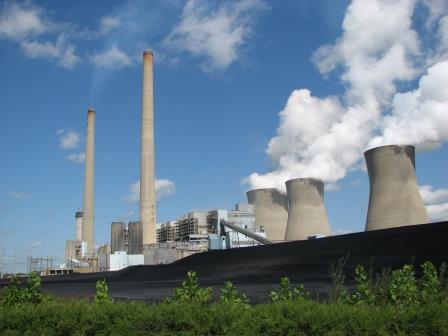What is the Clean Power Plan for Existing Power Plants?
On Aug. 3, 2015, the U.S. Environmental Protection Agency announced that it was finalizing its Clean Power Plan for Existing Power Plants, also known as the 111(d) Rule. That plan was published in the Federal Register on Oct. 23, 2015.
The goal of the rule is to reduce carbon emissions from power plants, which are the nation's largest source of such emissions. According to the EPA, the plan should - by 2030 - cut carbon emissions from the power sector 32 percent below 2005 levels.
To comply with this Clean Air Act rule, states may develop state plans, adopt model state plans developed by the U.S. EPA, or have a federal plan imposed on them.
On Feb. 9, 2016, the U.S. Supreme Court stayed implementation of the Clean Power Plan pending the outcome of a lawsuit challenging the plan's legality.
To read the Clean Power Plan for Existing Power Plants in its entirety, and/or to see fact sheets and other information compiled by the U.S. EPA, click here.
West Virginia Feasibility Study
During the 2015 Legislative Session, the West Virginia Legislature passed a bill (House Bill 2004), requiring the West Virginia Department of Environmental Protection (WVDEP) to study the feasibility of a state 111(d) plan. This study needed to include an analysis of the potential impact to the state, its people and its economy. The WVDEP was required to submit a report detailing the study's findings to legislators 180 days after finalization of the rule. That 180-day deadline started Oct. 23, 2015, the day the plan was published in the Federal Register. That made the deadline for the feasibility study to be submitted to the Legislature April 20, 2016. The Supreme Court stay of the Clean Power Plan and its associated deadlines did not affect the state feasibility study deadline.
To conduct the analysis the Legislature required, the WVDEP (1.) solicited information from the owners of the state's electric generating units; (2.) hired Marshall University's Center for Business and Economic Research, which subcontracted with Energy Ventures Analysts Inc. of Arlington, Virginia, for economic and market analysis of the impact of the 111(d) rule on the state; (3.) identified parties from business, labor, environmental and public interest groups and governmental agencies with potentially useful information concerning this assessment and solicited their input; (4.) notified the public of the feasibility assessment and comprehensive analysis and solicited comment; and (5.) conducted independent research on topics related to the assessment and analysis.
To read House Bill 2004 in its entirety, click here.
To read the Clean Power Plan Feasibility Study submitted by the WVDEP to the West Virginia Legislature on April 20, 2016, click here.
To read the Marshall University Center for Business and Economic Research/Energy Ventures Analysts report, submitted with the feasibility study, click here.
Statement from West Virginia's Governor
To read an Oct. 27, 2015, statement from West Virginia Governor Earl Ray Tomblin about submission of a plan to the U.S. EPA, click here.
State Plan
The WVDEP will not develop a state plan to comply with the EPA's 111(d) Rule unless the stay of the Clean Power Plan is lifted. If a state plan is developed, WVDEP would be charged with drafting such a plan and submitting it to the Legislature for approval before submitting it to the U.S. EPA.
Important Dates
- Aug. 3, 2015: U.S. EPA releases Clean Power Plan for Existing Power Plants, also known as the 111(d) Rule
- Oct. 23, 2015: 111(d) Rule is published in the federal register, making it final
- Dec. 31, 2015: Deadline to submit public comments/information to WVDEP for use in development of feasibility study
- Feb. 9, 2016: The U.S. Supreme Court stays implementation of the Clean Power Plan until a court challenge of the plan is resolved
- April 20, 2016: WVDEP's feasibility study is submitted to the West Virginia Legislature